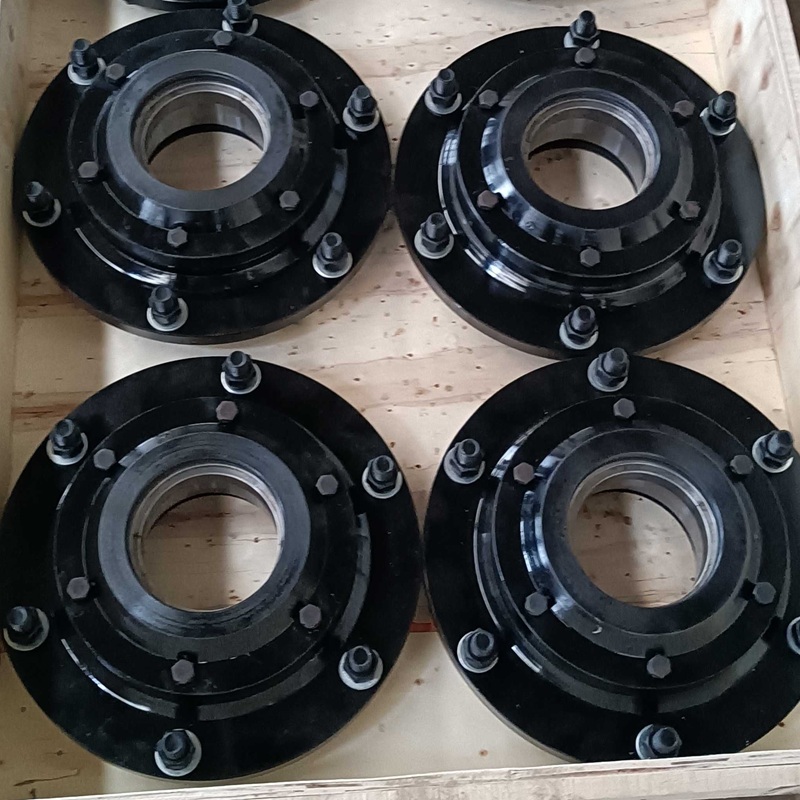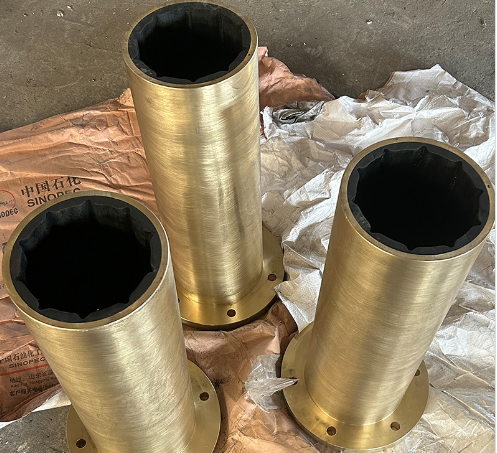The Impact of Rudder Bearings on Ship Maneuverability: A Comprehensive Analysis
Release Time:
May 29,2025
The Impact of Rudder Bearings on Ship Maneuverability In the world of maritime transportation, precision, safety, and efficiency are paramount. One of the critical components that play a significant role in these aspects is the rudder bearing. Rudder bearings are essential parts of a ship’s steering system, allowing for optimal maneuverability. This article explores the impact of rudder bearings o
The Impact of Rudder Bearings on Ship Maneuverability
In the world of maritime transportation, precision, safety, and efficiency are paramount. One of the critical components that play a significant role in these aspects is the rudder bearing. Rudder bearings are essential parts of a ship’s steering system, allowing for optimal maneuverability. This article explores the impact of rudder bearings on ship maneuverability, discussing their functions, types, maintenance, and the latest advancements in technology.
Understanding Rudder Bearings: An Overview
Rudder bearings are mechanical components that support the rudder and facilitate smooth movement as it pivots to change the vessel's direction. These bearings are positioned at the junction where the rudder meets the hull, enabling it to rotate effectively and thereby influence the ship's course.
Types of Rudder Bearings
There are various types of rudder bearings, each designed for specific applications and vessel types. Understanding these differences can help vessel operators select the right bearing for optimal performance.
1. Plain Bearings
Plain bearings are among the most commonly used rudder bearings. They consist of a simple design with a cylindrical shape, allowing for smooth, low-friction movement of the rudder. While plain bearings are cost-effective, they require regular lubrication and maintenance to prevent wear and tear.
2. Roller Bearings
Roller bearings utilize cylindrical rollers to reduce friction between the rudder and its support. They are especially beneficial for larger vessels, providing enhanced load capacity and stability. Roller bearings often require less maintenance than plain bearings due to their design.
3. Composite Bearings
Composite bearings combine materials such as plastic and metal to capitalize on the advantages of both. These bearings are increasingly popular due to their resistance to corrosion and wear. They offer a longer lifespan and reduced maintenance needs, making them a viable option for modern vessels.
The Role of Rudder Bearings in Ship Maneuverability
The maneuverability of a ship is heavily influenced by the performance of its rudder bearings. A well-functioning rudder bearing allows for quicker and more precise turns, directly affecting the vessel's navigation capabilities.
1. Steering Precision
Rudder bearings facilitate the precise control of the rudder angle. The ability to adjust the rudder at exact angles is critical in navigating tight spaces, such as harbors or narrow channels. Bearings that are worn or not properly lubricated can lead to imprecise control, making it difficult for the captain to maneuver the ship safely.
2. Response Time
Quick response time during steering adjustments is essential for maintaining a vessel's course. Efficient rudder bearings contribute to a faster response, enabling the ship to react promptly to changes in wind, current, or other external factors. This capability is particularly vital in adverse weather conditions or emergency situations.
3. Stability and Safety
Rudder bearings also play a critical role in ensuring the stability of the ship. A malfunctioning bearing can lead to excessive play or movement in the rudder, significantly impacting the vessel's ability to maintain a steady course. This instability can pose severe safety risks, especially in crowded or challenging navigational environments.
Maintenance Practices for Rudder Bearings
Regular maintenance and inspection of rudder bearings are crucial to ensure their longevity and performance. Below are essential maintenance practices that vessel operators should follow.
1. Regular Inspections
Conducting routine inspections of rudder bearings helps identify wear and tear early. Look for signs of corrosion, excessive play, or any irregularities in operation that may indicate the need for replacement or repair.
2. Lubrication
Proper lubrication of the bearings is vital to reduce friction and prevent wear. Operators should follow the manufacturer's recommendations regarding the type and frequency of lubrication. Regular checks should be made to ensure that the lubrication system is functioning correctly.
3. Monitoring Performance
Monitoring the performance of rudder bearings during operations can provide insights into their condition. Any unusual noises, vibrations, or changes in steering responsiveness should be addressed immediately to prevent further damage.
Advancements in Rudder Bearing Technology
As technology continues to evolve, so do the materials and designs used in rudder bearings. Innovations in this field aim to enhance durability, reduce maintenance requirements, and improve overall performance.
1. Smart Bearings
Recent advancements have led to the development of smart rudder bearings equipped with sensors. These sensors monitor the bearing's condition in real-time, providing data on wear and lubrication levels. Such technology allows for proactive maintenance, significantly minimizing the risk of failure.
2. Enhanced Materials
New composite materials are being researched and implemented to offer better corrosion resistance and reduced friction. These materials can withstand harsh marine environments, leading to longer-lasting bearings that require less frequent replacement.
The Economic Impact of Rudder Bearing Efficiency
Efficient rudder bearings contribute not only to safety and maneuverability but also to the overall economics of maritime operations.
1. Fuel Efficiency
Well-maintained rudder bearings reduce drag on the hull, improving fuel efficiency. Ships that can maneuver effectively consume less fuel, leading to significant cost savings over time.
2. Reduction in Downtime
Regular maintenance and the use of advanced bearing technologies can reduce the likelihood of unexpected failures. This leads to decreased downtime for repairs, allowing for smoother operation and profitability in shipping routes.
FAQs about Rudder Bearings and Ship Maneuverability
1. What materials are commonly used for rudder bearings?
Rudder bearings are typically made from materials like bronze, composite plastics, and stainless steel, each providing different benefits in terms of durability and maintenance.
2. How often should rudder bearings be replaced?
The replacement frequency of rudder bearings depends on usage and maintenance practices. Regular inspections will help determine the right time for replacement, which can be anywhere from a few years to over a decade.
3. Can I perform rudder bearing maintenance myself?
While some basic maintenance tasks can be performed by ship operators, it’s advisable to consult with professionals for inspections and complex repairs to ensure safety and compliance with maritime regulations.
4. How do rudder bearings affect ship safety?
Rudder bearings are essential for maintaining control and stability during navigation. Malfunctioning bearings can lead to loss of control, increasing the risk of accidents and compromising safety.
5. What signs indicate that rudder bearings need maintenance?
Signs include unusual noises, vibrations during steering, increased resistance while turning, and visible wear or corrosion during inspections. Any of these signs should prompt immediate attention.
Conclusion
In summary, the impact of rudder bearings on ship maneuverability cannot be overstated. These components are vital for ensuring precise steering, quick response times, and overall vessel stability. By understanding the different types of rudder bearings, their roles in maneuverability, and the importance of regular maintenance, maritime professionals can significantly enhance the safety and efficiency of their operations. As technology continues to advance, the future of rudder bearing design promises even greater improvements, leading to safer and more cost-effective maritime transportation.
Keywords:



